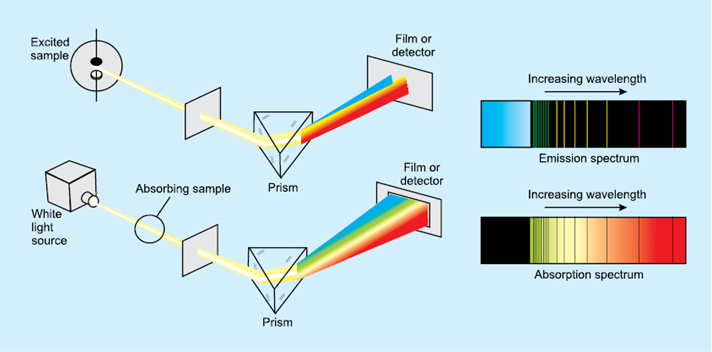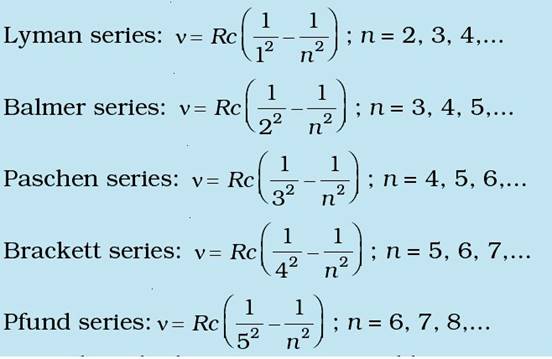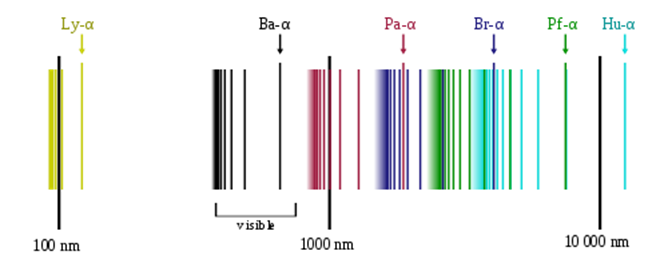What is the experimental evidence in support of the idea that electronic energies in an atom are quantized?
The atomic spectra of hydrogen revealed that more than 4 lines coming closer together in the ultraviolet end; they converged and soon gives rise to the concept of spectral lines (instead of a definite spectrum )

In order to get the atomic spectrum of gaseous hydrogen, a discharge tube containing the gas is usually employed; I the high voltage applied a discharge is started and the molecules split into atoms. Images of the slit are formed by each resolved component of the radiation which appears as discrete illuminated lines on a dark background when viewed through a telescope.
In 1885, Balmer showed on the basis of this experimental observation, that line spectrum of the visible lines can be expressed in terms of wavenumber ( ![]() =1/λ ) and the formula will be :
=1/λ ) and the formula will be :
![]()
Where ![]() is the Rydberg’s constant also known as RH
is the Rydberg’s constant also known as RH
Series of line described buying this formula is called Balmer series which only appears the line in the visible region of the electromagnetic spectrum.
Besides the Balmer series, in the visible region, the spectrum of hydrogen also consists of the Lyman series in the ultraviolet region and 3 others in the infrared region – Paschen, Brackett and Pfund
.
Soon it was concluded that the wavelengths of the line spectra in all series of the spectrum can be expressed as the simple relation :

![]() ,
,
where n2>n1 .
The bright-line spectrum shows that the energy levels in an atom are quantized. These lines are obtained as a result of electronic transitions between the energy .and if the electronic energy levels were continuous and not quantized or discrete; the atomic spectra would have shown a continuous absorption(from lower to higher energy level transition) or emission (from higher to lower energy level transition.